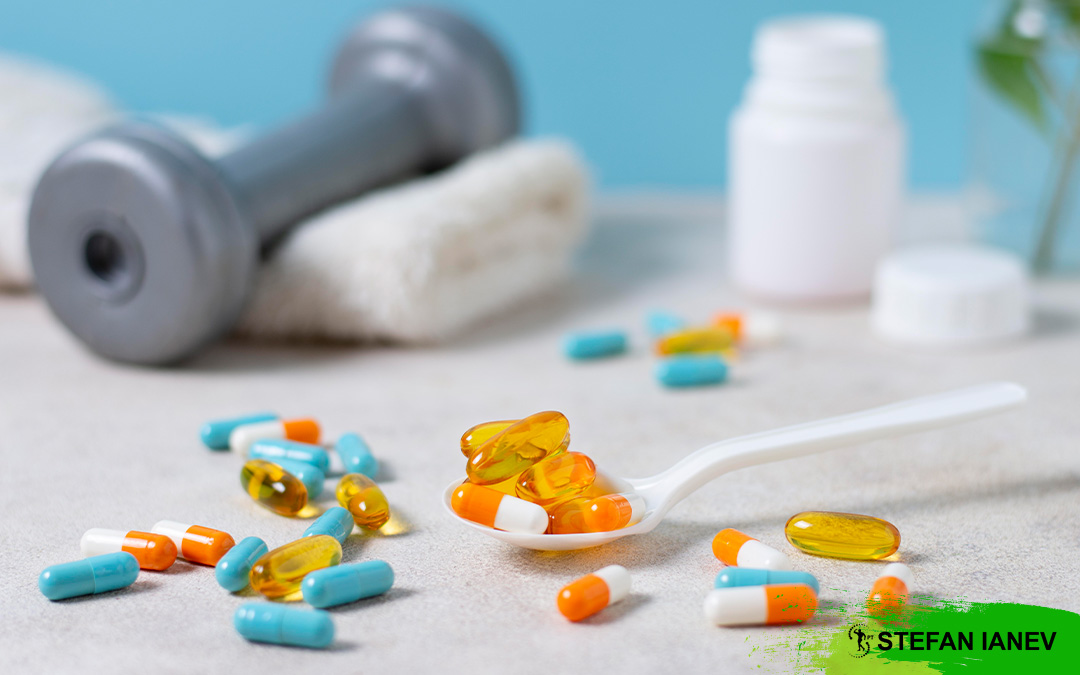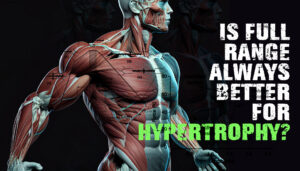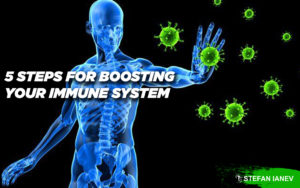There are literally hundreds of dietary supplements available on the market today.
Supplement manufacturers often claim numerous benefits from consuming their products ranging from improved general health, to improved performance, improved sleep and stress management, and improved cognitive function.
However, if you took the time to dig through all the research, you will be shocked at how underwhelming it all is. There are literally only a handful of supplements that have strong scientific backing and have been proven to work.
The research on most supplements is inconclusive, and some supplements have even been found to have detrimental effects. For this reason, my list of supplements that I have been using and recommending to clients over the last few years has diminished substantially.
More recently however, as I have delved down the field of methylation and epigenetics, I have discovered that because of biochemical individuality, some supplements work well for some people but can be detrimental to others. That may largely explain the inconsistency between studies.
While there are a few potentially harmful supplements that I can list and talk about, for the purpose of this article I’m just going to focus on 5 supplements that you should be careful with, if you are currently taking or considering taking any of them.
Here is the list of 5 supplements:
- SAMe
SAMe stands for S-adenosyl-L-methionine. It is the primary methyl donor in the body and comes from the amino acid methionine. Methylation is responsible for over 80 very important reactions in the body including creatine synthesis, liver detoxification, gene expression, and regulating neurotransmitter activity.
SAMe is most often used for mood enhancement and to improve symptoms of depression or anxiety. In fact, some studies have shown SAMe to be more effective at improving depressive symptoms than SSRI anti-depressant drugs (1).
That’s because SAMe acts as a natural serotonin and dopamine reuptake inhibitor, which increases activity of these neurotransmitters in the brain. Since most people with depression or mood problems have low activity of these neurotransmitters, their symptoms often improve by taking SAMe.
The problem is that depression and/or anxiety can also be caused by excess activity of these neurotransmitters. If someone with excess activity of these neurotransmitters takes SAMe, they may feel drastically worse. In fact, this is believed to be the reason why some people become suicidal or homicidal when taking SSRI medications (2,3).
Another problem with taking SAMe even in people who do not have excess neurotransmitter activity is that without the proper co-factors SAMe cannot be recycled back to methionine and homocysteine can become elevated. High homocysteine is a risk factor for cardiovascular disease (4).
So, if you are considering taking SAMe, at the very least have your homocysteine levels checked out and start at a very low dose. If you feel worse from taking it then discontinue immediately.
- Methylfolate
Methylfolate or 5-methyltetrahydrofolate is the active form of vitamin B9 or folate in the body. It is one of the primary cofactors involved in the methylation cycle. Methylfolate reacts with vitamin B12 and donates its methyl group so that homocysteine can be recycled back to methionine.
Most dietary sources of folate and folic acid which is the synthetic form of folate found in many over the counter supplements and fortified foods like diary and grains need to be converted to methylfolate by the MTHRF enzyme.
Due to the emerging popularity of genetic testing, particularly the MTHFR gene, many people that are testing positive for MTHFR mutations are being adviced to supplement with methylfolate.
It is believed that having a mutation in the MTHFR gene which slows down enzyme function can cause impairment in the methylation cycle and lead to elevated homocysteine levels. The theory behind supplementing with methylfolate is that you can bypass the MTHRF enzyme mutation and improve methylation.
There are several problems with supplementing with methylfolate. Firstly, methylfolate without the proper cofactors such as methionine and vitamin B12 can cause a methyl trap which can interrupt the methylation cycle (5).
Secondly, all types of folates can decrease methylation at DNA histone tails which leads to increased expression or serotonin and dopamine reuptake transporters (6). This will lower serotonin and dopamine activity in the brain. Anyone suffering from low serotonin or dopamine depression or anxiety will feel markedly worse.
So before going out and taking methylfolate, even you have the MTHRF gene polymorphism, it is best to have your serum and red cell folate levels checked out to see if you really need it or not.
- Niacin
Niacin or vitamin B3 is a major component of NAD and NADP, two coenzymes involved in cellular metabolism. It has been used since the 1950s to treat high cholesterol and dyslipidaemia. In fact, it has been shown lower LDL cholesterol by 5-20%, increase HDL cholesterol by 15-35%, and lower triglycerides by 20-50% (7).
Additionally, niacin has also been used since the 1950s for the treatment schizophrenia by pioneering psychiatrists such as Dr Abram Hoffer. Later it was discovered by Dr Carl Pfeiffer that niacin was only beneficial for schizophrenics with low blood histamine levels which correlates with overmethylation.
Overmethylated individuals generally have excess activity of dopamine, norepionerphrine, and/or serotonin in the brain. In 2005 it was discovered that niacin reduces DNA methylation which increases expression of reuptake transporters for dopamine, norepinephrine, and serotonin (8).
Therefore, much like folates, niacin is a natural dopamine and serotonin reuptake promoter. This is great for overmethylated individuals with excess neurotransmitter activity, but for undermethylated individuals which makes up a greater percentage of the population it can make them drastically worse.
So, anyone considering taking niacin to lower cholesterol or improve blood lipids should consider getting their methylation status tested. The two best tests for assessing functional methylation status are the SAM:SAH ratio and whole blood histamine.
- Tyrosine
The amino acid tyrosine is a precursor of the catechol neurotransmitters dopamine, norepinephrine, and epinephrine. People often supplement with tyrosine to improve energy, motivation, focus, and concentration. It is a popular ingredient in many pre-workout supplements.
There are several potential problems with tyrosine supplementation. For starters, brain fog or poor focus and concentration can be caused by excess dopamine or norepinephrine activity in the brain (9).
That’s because these neurotransmitters operate on a bell curve. Excess levels can have a detrimental effect on brain function. Those that already have excess dopamine or norepinephrine activity may feel even worse from supplementing with tyrosine.
Additionally, some people may display symptoms of low dopamine or norepinephrine that is not due to low dopamine or norepinephrine levels, but due to receptor desensitization as a result of too much activity at those receptors. In that case taking tyrosine won’t help and may even exacerbate the issue because it will flood the system with even more catecholamines potentially desensitizing the receptors further.
For individuals with low dopamine or norepinephrine levels, taking tyrosine can make them feel better in the short term. However, prolonged tyrosine supplementation can deplete serotonin levels (10).
That’s because dopamine, norepinephrine, and serotonin are all degraded by the MAOA enzyme. When you take tyrosine to increase dopamine and norepinephrine levels, more serotonin will be degraded by the MAOA enzyme and eventually this can lead to serotonin depletion.
Once this has occurred it is very hard to correct later with nutrition alone because tyrosine and tryptophan which is the precursor to serotonin need to be administered in the proper ratio.
For this reason, if someone is low in dopamine or norepinephrine, and taking tyrosine gives them a buzz and makes them feel better, they should not take it too often but maybe only on occasion when they really need it.
- 5-HTP
5-HTP stands for 5-Hydroxytryptophan. It is synthesised from the amino acid tryptophan and it is a direct precursor to our “feel good” neurotransmitter serotonin. Serotonin is also a precursor to melatonin which is the hormone that regulates out sleep-wake cycle.
People low in serotonin usually suffer from some form of depression, anxiety and/or insomnia. For that reason, 5-HTP has become a popular over the counter supplement that many people are using to self-medicate the above symptoms.
The problem with supplementing with 5-HTP is that you can deplete dopamine levels (10). As mentioned above dopamine and serotonin are both degraded by the MAOA enzyme because they are both monoamines. If you take 5-HTP on a regular basic, over time you can deplete dopamine levels, and once this happens it is very hard to correct with nutrition alone.
In your normal diet tyrosine and tryptophan which is the precursor to 5-HTP should be in the right ratio if you are consuming enough protein. Therefore, additional tyrosine and/or tryptophan/5-HTP should not be required unless you have a protein malabsorption issue, which is quite rare.
If someone does suffer from symptoms of low serotonin, there are more effective supplements to increase serotonin activity in the brain. As mentioned previously, SAMe acts as a natural serotonin reuptake inhibitor, which increases the amount of serotonin available to bind with receptors. Just make sure if you are going to take SAMe, follow the instructions outlined above.
That wraps it up for this article. As you can see, nutrients can have a very powerful effect on our biochemistry, especially those nutrients which affect genetic expression. That’s why you shouldn’t just dive headfirst and start taking any supplement to treat your symptoms. If you don’t know what you are taking, often times it is best not to take anything at all.
References
- Galizia I, Oldani L, Macritchie K, et al. S-adenosyl methionine (SAMe) for depression in adults. Cochrane Database Syst Rev. 2016;10(10):CD011286. Published 2016 Oct 10. doi:10.1002/14651858.CD011286.pub2
- Sharma T, Guski LS, Freund N, Gøtzsche PC. Suicidality and aggression during antidepressant treatment: systematic review and meta-analyses based on clinical study reports. BMJ 2016;352:i65.
- Bielefeldt AØ, Danborg PB, Gøtzsche PC. Precursors to suicidality and violence on antidepressants: systematic review of trials in adult healthy volunteers. J R Soc Med 2016;109:381-392.
- Ganguly P, Alam SF. Role of homocysteine in the development of cardiovascular disease. Nutr J. 2015;14:6. Published 2015 Jan 10. doi:10.1186/1475-2891-14-6
- Shane B, Stokstad EL. Vitamin B12-folate interrelationships. Annual Review of Nutrition 1985 5:1, 115-141
- Luka Z, Moss F, Loukachevitch LV, Bornhop DJ, Wagner C. Histone demethylase LSD1 is a folate-binding protein. Biochemistry. 2011;50(21):4750–4756. doi:10.1021/bi200247b
- McKenney J. New Perspectives on the Use of Niacin in the Treatment of Lipid Disorders. Arch Intern Med. 2004;164(7):697–705. doi:10.1001/archinte.164.7.697
- Avalos, José L. et al. Mechanism of Sirtuin Inhibition by Nicotinamide: Altering the NAD+ Cosubstrate Specificity of a Sir2 Enzyme. 2005; Molecular Cell, Volume 17, Issue 6, 855 – 868
- Cools R, D’Esposito M. Inverted-U-shaped dopamine actions on human working memory and cognitive control. Biol Psychiatry. 2011;69(12):e113–e125. doi:10.1016/j.biopsych.2011.03.028
- Hinz M, Stein A, Uncini T. Relative nutritional deficiencies associated with centrally acting monoamines [published correction appears in Int J Gen Med. 2015;8:163]. Int J Gen Med. 2012;5:413–430. doi:10.2147/IJGM.S31179






